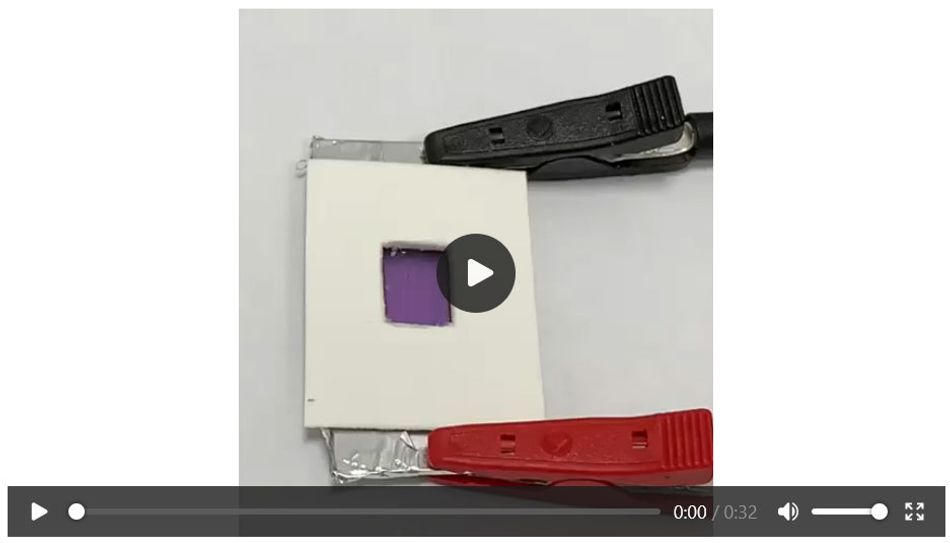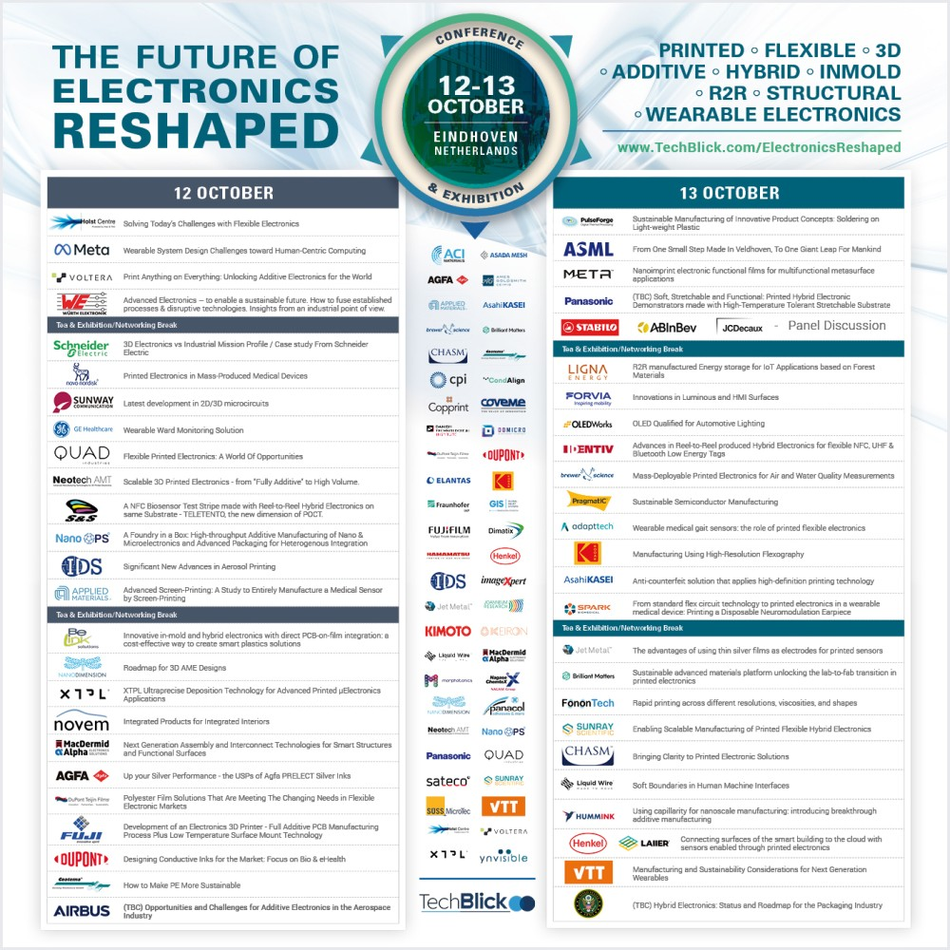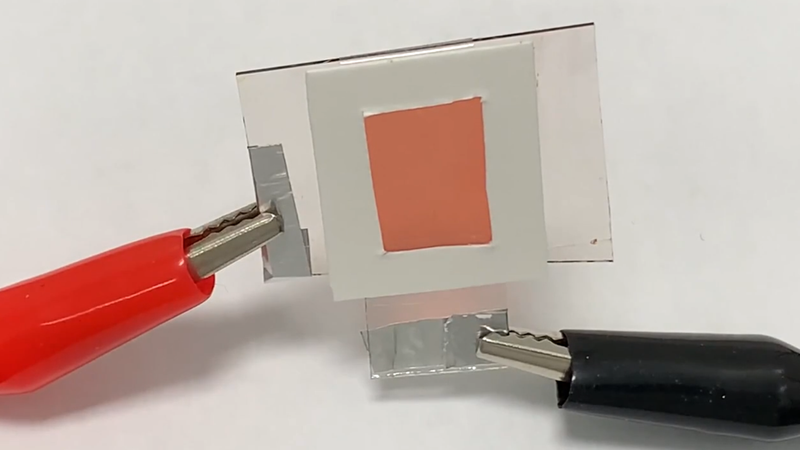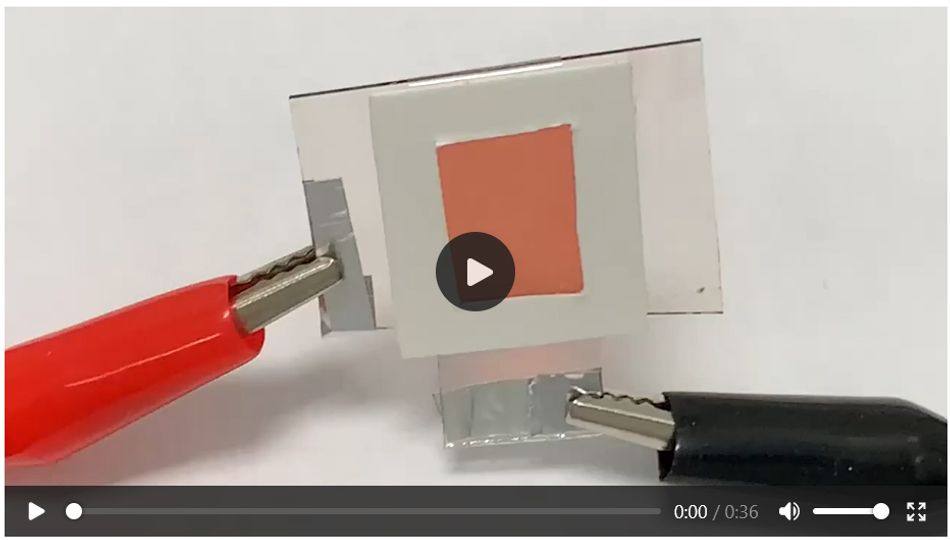Brilliant Colour-Full Printable Electrochromic Materials
Electrochromic technology enables layers that can change color or become transparent using an electrical current. Compared to other color-changing technologies such as photochromism and thermochromism, electrochromic devices can be perfectly controlled to achieve the desired transparency at any time. While the technology has been discovered almost 50 years ago, only recently have commercial applications emerged, mainly in electrochromic glass for automotive rearview mirrors and airplane windows.
Authors: Nicolas Bouchard n.bouchard@brilliantmatters.com | François Grenier f.grenier@brilliantmatters.com
Electrochromic technology enables layers that can change color or become transparent using an electrical current. Compared to other color-changing technologies such as photochromism and thermochromism, electrochromic devices can be perfectly controlled to achieve the desired transparency at any time. While the technology has been discovered almost 50 years ago, only recently have commercial applications emerged, mainly in electrochromic glass for automotive rearview mirrors and airplane windows.
A large potential market for electrochromic devices is in smart windows, where they show promise to save energy. The building sector accounts for over 50% of greenhouse gases produced annually, and building operations, including heating and cooling, account for close to 30% of this number (source: 2021 Global Status ABC Report). Using electrochromic devices, it is possible to implement energy-saving control strategies that beat any other glazing with static optical properties. However, the main challenge remaining to having this technology becoming more widespread is the high cost of electrochromic modules.
Brilliant Electrochromic Materials
Seeing this market challenge, we saw an opportunity for using our organic semiconductors (OSCs) to create a line of products dedicated to electrochromic devices. As OSCs can be modified, it is possible to devise them to be easy to formulate into inks, which opens cost-effective manufacturing from simple printing techniques on rigid (ex: glass) or flexible (ex: plastic, fabric) substrates.
Being carbon-based and easy to modify at the molecular level, just like dyes and pigments, our products are color-tunable and can create more aesthetic and colorful electrochromic glass than any competing technology. As a first line of product, we created four individual materials close to the primary colors used in CMYK printing inks (CMYK, for Cyan, Magenta, Yellow and Black). The materials were tested individually in test devices and all produce color change when a voltage below 5V is applied.
All the products are equally soluble in solvents such as toluene or xylene, which enables their use in fluid inks compatible with most current deposition techniques, including slot-die, inkjet, or spray coating. Their soluble, particle-free nature also ensures they form haze-free and uniform layers with controllable thickness. For example, using a single color, the color changes from pale to very intense by varying the film thickness when changing ink deposition parameters or ink loading.
This ability to make soluble inks also brings another benefit, where it is possible to be creative and make other colors from the originals by blending the materials. We tested mixing the materials together to create new colors, for example, by mixing yellow and magenta to make an orange electrochromic device. A peculiar behaviour coming from this is that the materials, even incorporated into a single layer, will change color separately at their respective switching voltages. In this case, we observe a gradual switch from orange to yellow to light blue (transmissive state). This happens because the magenta material switches color at a lower voltage than the yellow one, enabling multiple color changes from a single device if needed, without adding any complexity to the manufacturing process. (see video).

More importantly, this opens the possibility to achieve a very wide range of colors from a basic set of materials. By measuring the optical properties of the materials, namely their light-absorption spectra and absorption coefficients, we can make a predictive tool to blend the materials to achieve the desired color. This ability to blend colors predictably like regular inks is key to enable electrochromic devices that are printed into complex graphical designs, for example with inkjet printing.

The materials show good robustness in devices, as we observed only small changes in the device visual transmittance over 500 cycles. However, the devices we made at this stage are not optimized, and choices in electrolyte and electrodes, as well as contaminant management, can play a large role in electrochromic device durability. In our ongoing developments on our technology, and through strategic partnerships, we believe we can lower cost modules with our materials and reach state-of-the-art durability of over 10000 cycles of color change, a milestone that is often reached with R&D organic electrochromic devices.

Conclusion and outlook
In conclusion, Brilliant Matters has developed a unique set of materials for producing colorful electrochromic devices. The main features we demonstrate for the products are:
- Colorful organic electrochromic materials in CMYK colors.
- Blending materials can create predictable new colors.
- All materials are processable into fluid inks that form haze-free films.
- Demonstrated reversibly cycle from colored to bleached state.
- Forms fluid ink formulations compatible with slot-die, inkjet and spray coating.
Using this line of products, improved aesthetics can be achieved for smart windows as well as other applications including automotive, smart labels, IoT or advertising. From this line of products, Brilliant Matters hopes to create a complete set of compatible and ready to use inks to make fully functional and robust modules using standard printing equipment.
Company summary
Brilliant Matters was created in 2016 by passionate material scientists to bring to market a new generation semiconductor that are the foundation to create a new sustainable electronics industry. Our company operates as a research and chemical manufacturing company for organic electronics materials used in emerging printed electronics, who need a specialized partner to develop and reliably supply key materials that critically impact their product’s competitivity on the market. By using our material development platform and clean production technologies, we provide reliable and highly customizable semiconductors from R&D to pilot scale for applications that include printed solar cells, electrochromic devices, SWIR sensors, microchips and more.
The Future of Electronics RESHAPED | Global Conference & Exhibition
12 & 13 October 2022, Eindhoven, Netherlands
Key topics: Printed | Flexible | Additive | Hybrid | 3D | Structural | R2R | InMold | Textiles | Stretchable | Wearable Electronics





